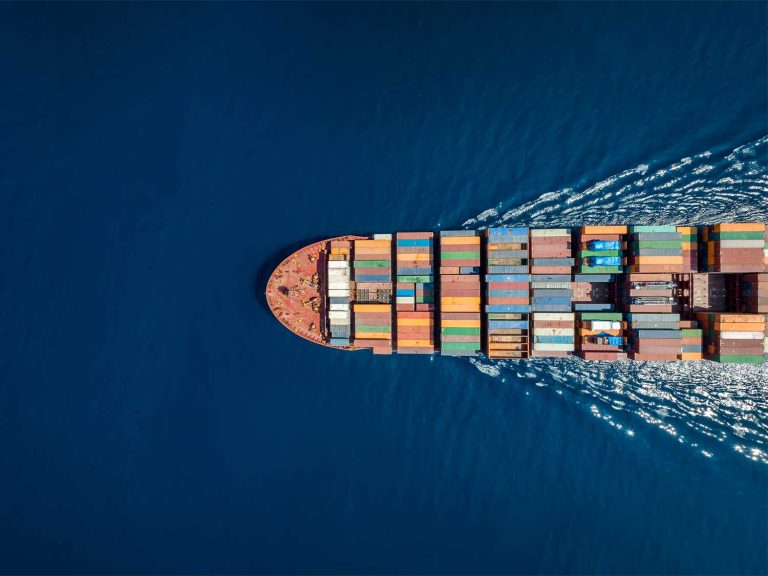
Date:
Uncertain Waters: Securing Ocean Freight Rates
While there’s talk in the market about further pressure on rates, the reality is more complex, with container spot rate indices showing mixed signals last week, suggesting that any softening on key east-west routes might not last.
The global supply chain remains unpredictable, and several factors are still keeping the container market tight, which means any short-term dip in rates could quickly reverse, making it risky to assume that prices will continue to ease.
Carriers Act to Support Rates
Shipping lines are actively removing capacity from major east-west trades to reduce supply and put upward pressure on pricing. According to Drewry’s, 68 sailings across the Pacific, Asia-Europe, and Transatlantic trades have been blanked between this week and the end of April, while Sea-Intelligence data reports 47 blank sailings in the same period.
While methods of tracking blank sailings may vary, particularly as the major alliances transition between old and new service structures, the trend is clear; carriers are taking deliberate action to support General Rate Increases (GRIs) and stabilise the market in their favour.
Charter Market Dynamics Are Holding Rates Firm
While spot pricing may hint at a softer market, the time-charter sector continues to show strength. Many non-operating shipowners are keeping older, fully paid vessels in service, since they remain profitable even at lower margins.
This keeps theoretical capacity high but delays any significant correction in long-term charter rates, providing a buffer of rate stability for carriers. Basically the return is greater to ship owners to work the aging vessels in the current market than to scrap them. However once the charter rates diminish as freight rates are not at sustainable levels to support higher charter rates then scrapping vessels becomes more profitable and the supply of capacity will be eroded.
This willingness to keep tonnage in play – rather than scrap it – creates a layer of structural overcapacity. But crucially, it also delays any meaningful correction in longer-term charter costs, which in turn supports rate stability for shipping lines.
Shippers on the Asia-Europe trade lane should be particularly alert. With the traditional peak season approaching and transit times still extended due to Red Sea routing changes, demand could pick up sooner than expected, just as it did in 2024, when European importers advanced bookings to avoid delays.
Utilisation remains relatively high, and the market is only one or two strong booking weeks away from tightening significantly. Once that happens, space could quickly become constrained and prices may respond accordingly.
Congestion, Reliability and GRIs
At the same time, much of the market’s theoretical capacity isn’t actually accessible. Port congestion continues across Europe, including Antwerp, Hamburg, Rotterdam, and Le Havre, with yard occupancy levels of 75–90%, disrupting container flows and delaying vessel turnarounds.
Conditions are similar in Asia. Shanghai is experiencing delays due to fog and vessel bunching, while Singapore and Port Klang are seeing large backlogs and productivity slowdowns. Globally, schedule reliability remains under 55%, and with new carrier alliances still in rollout mode until July, disruption is likely to persist.
This operational friction reduces effective supply, keeping pressure on rates and creating risk for those waiting to move goods last-minute.
The container shipping lines have begun applying General Rate Increases (GRIs) and surcharges in recent weeks to stabilise rate levels in key corridors. While results may vary, these moves signal a clear intent to maintain pricing discipline, particularly as demand indicators begin to shift.
In an environment where schedule reliability is poor, congestion is high, and demand could rebound with little notice, waiting for rate relief may come with unintended consequences.
Certainty Beats Volatility
Shippers looking to avoid surprises would be well advised to fix rates where possible—because securing capacity and cost visibility offers valuable protection in a market that remains anything but predictable.
Freight markets can shift quickly, and when they do, the cost of waiting may outweigh any potential benefit. Fixing rates now delivers stability, security, and peace of mind in today’s volatile environment.
Our fixed-rate agreements act as a practical safeguard against market swings, offering predictable costs to support confident budgeting and planning.
Whether you’re managing high-volume trade lanes or simply seeking greater control over your supply chain, we’re here to help you stay ahead in 2025.
EMAIL our Managing Director, Andy Smith, to learn how we can support your business today.
